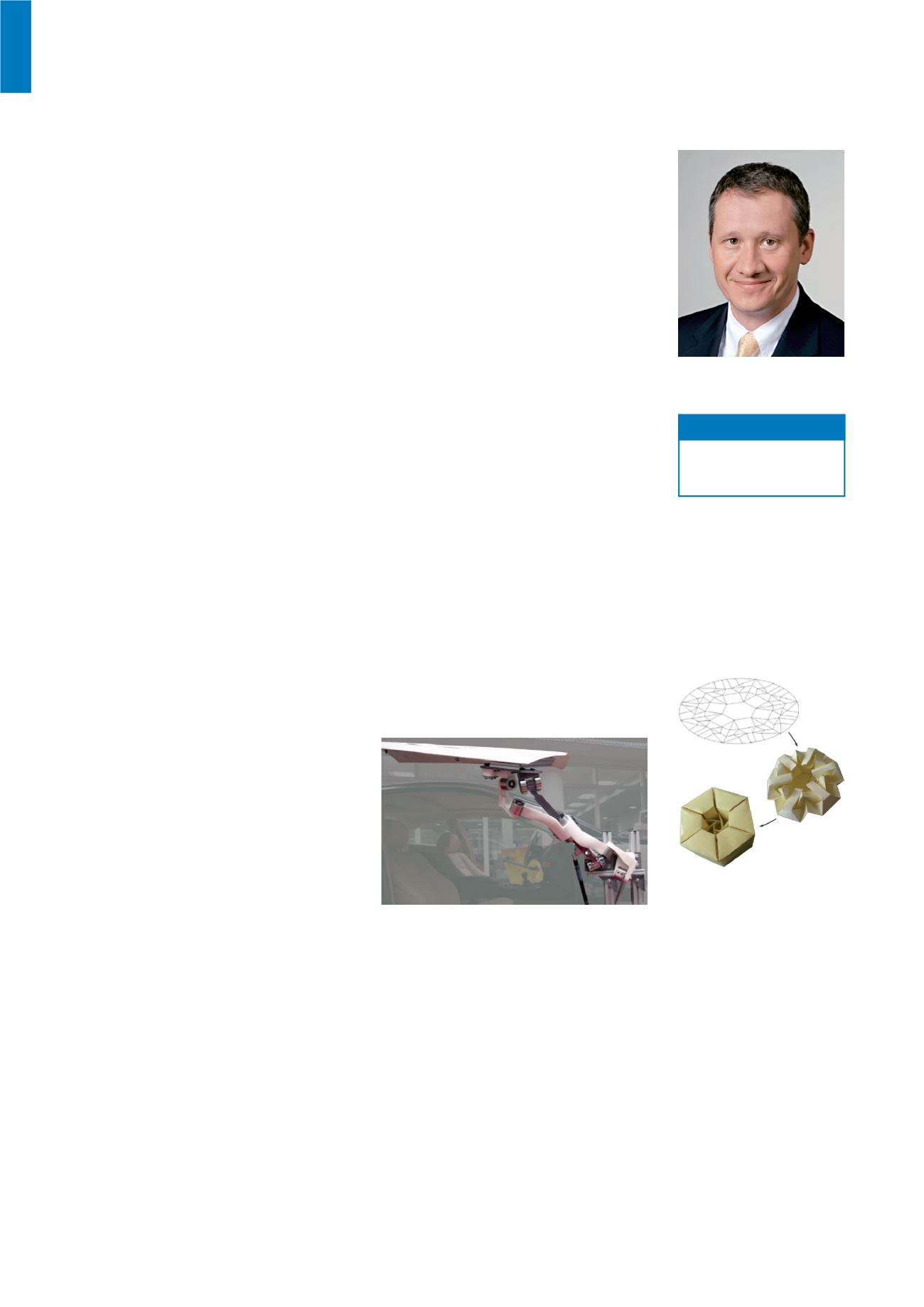

Micro Technology and Medical Device Technology
189
Micro Technology and Medical Device Technology
Computational design and rapid manufacturing of certified devices, mechanisms and robots
n
The focus of the Institute of Micro Technology and Medical Device
Technology is to accelerate the process of developing ideas into pro-
ducts. In research and science, the time required for implementation is
a significant factor for success. Therefore, rapid prototyping and rapid
manufacturing technologies are part of our main research interest. We
are systematically developing and analyzing new rapid technologies, as
well as applying them in the areas of precision engineering, micro tech-
nology and medical device technology. We are systematically validating
our research devices to achieve reliable scientific results. In the area
of medical technology, we develop according to ISO 13485, certify our
devices according to MDD/FDA and perform clinical studies according to
ISO 14155.
Task-Oriented, Computational Kinematic Design
Prof. Dr. Tim C. Lüth
www.mimed.mw.tum.de sekretariat@mimed.dePhone +49.89.289.15190
Contact
This year an extensive project on fun-
damentals to support nursing through
technical systems and infrastructures
was finalized. It was funded by the Alfried
Krupp von Bohlen und Halbach-Stiftung
and started in 2014. Our cooperation with
the nursing home KWA Luise-Kiessel-
bach-Haus turned out to be an important
success factor. Within the project we
focused on systems to assist both
caregivers and patients. We evaluated
passive force assisting devices for care
givers. In order to prevent dehydration,
we developed a system to automatically
detect the liquid intake of patients using
a detection cup, a detection straw and
a base station. We also developed a
lift-assist device to assist patients in
rising from a chair. The prototypes will be
further evaluated at the nursing home in
order to be able to realize ready-to-market
products.
pattern design. In another project (foun-
ded by the Bavarian Research Foundation
and in collaboration with BMW AG and
Webasto Edscha Cabrio GmbH), another
optimization based kinematic synthesis
approach was developed, which consi-
ders multiple pose synthesis with respect
to given space requirements in CAD-integ-
rated design processes.
Based on preceding analysis, synthesis
and design results the proof of concept
The initial and fundamental idea of
mechanism and machine theory consist
in designing mechanical devices with
task-specific mobility and dimensions
and represents also one of the basic
design methodologies behind linkage and
robotic motion systems developed at the
institute. In this context, the major goal of
the kinematic design group is to provide
computer-aided analysis and synthesis
methods that allow for the design and
prototyping of novel task-specific motion
systems.
This year a result in the area of computati-
onal synthesis methods was the develop-
ment of a novel formalism for membrane
folding pattern design based on concepts
of finite rigid motion and spherical
kinematic synthesis. These techniques
combine successively to segment a flat
bounded surface, such that it can reach
a prescribed spatial configuration. The
specific result is a creative but systematic
and computational procedure for crease
Example of the formalism for
membrane folding pattern design;
a hexagonal prism folding for
membrane packaging based on
concepts of finite rigid motion
and spherical kinematic synthesis
(MiMed)
Prototype of a compact, origami-inspired spatial car
door guidance linkage, which eases getting into a car
in cramped parking spots (MiMed)


















